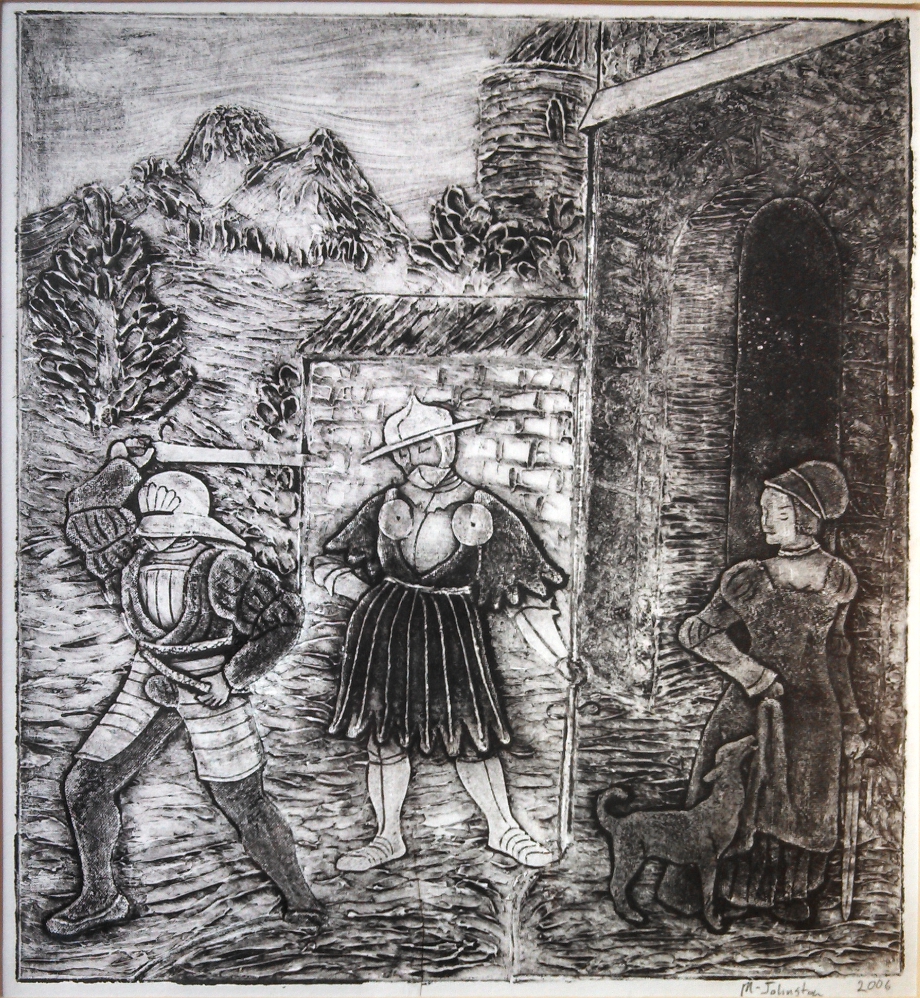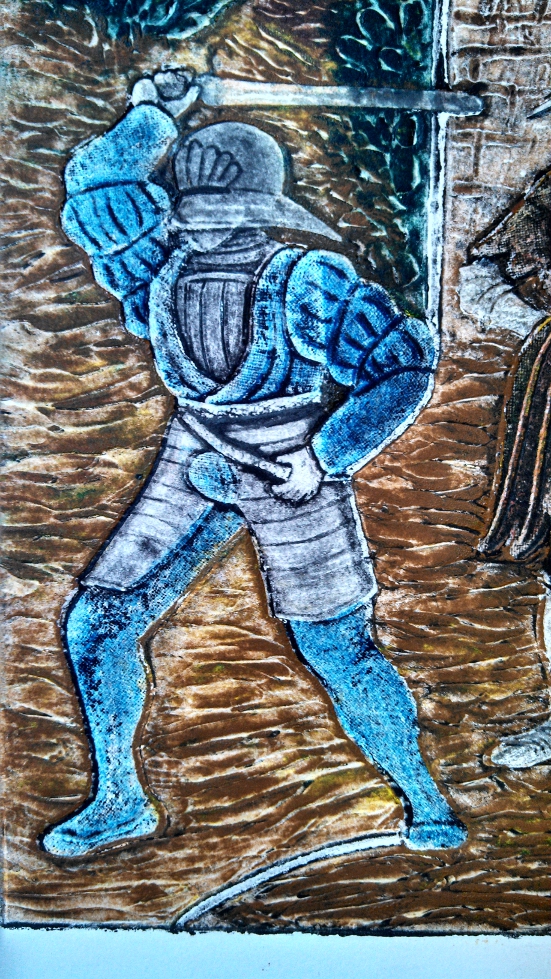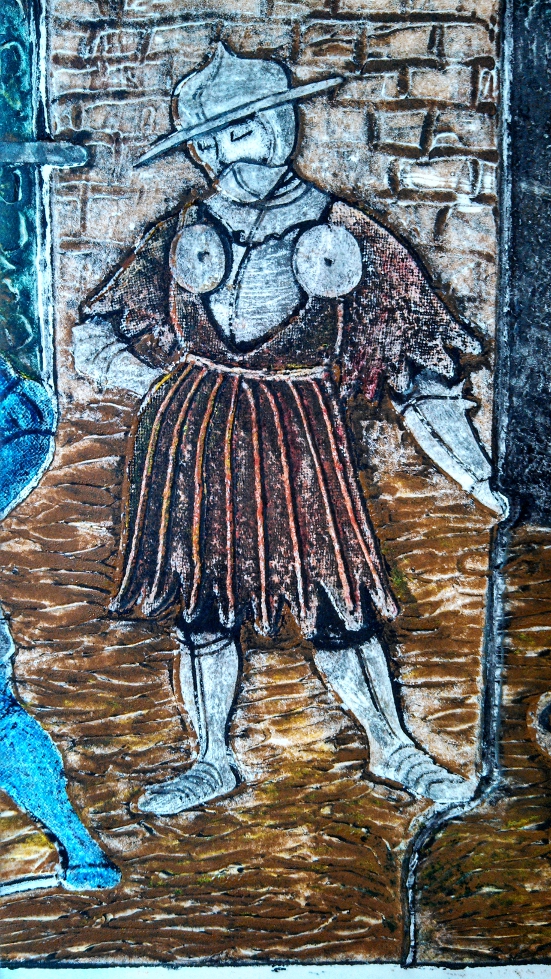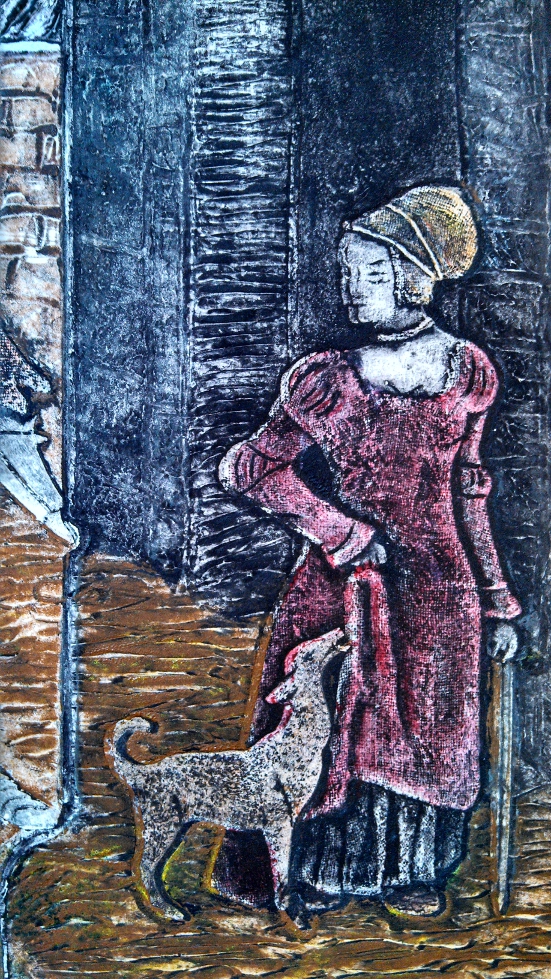September, 2006?
Collagraph, ?"x?"

|

|
|
Click here for more info about the black & white version. |
Click here for more info about the monotype color version. |
This was the first big projects for my first semester of printmaking. I enjoyed this project a lot, even though I may have misinterpreted part of the purpose behind the assignment and made it a whole lot more difficult for myself in doing so. The assignment was to create three collagraph printing plates which would somehow work with one another and be printed (with each having it's own separate run through the press) together on a single sheet of paper without parts of the prints overlapping each other... this was to be the printmaking 1 student's introduction to complex registration. Registration in printmaking is getting your print to go onto the paper in the exact place you want it to be... The thing that often makes this challenging is that the paper being printed on is often much larger than your printing plate - you place your inked printing plate face-up on the bed of the printing press, and lay the paper down onto of it. Because the paper is so much larger than the plate, it can be hard to tell where the printing plate is under the paper (and once the paper is down it is very hard to pick it up without getting ink from the plate on it, and even harder to put it back down in exactly the same spot so)... anyways, there are various sorts of templates and guides that can be made to help with registration (the frisket on a relief or letterpress is an example of a registration guide)...
So, on to my misinterpretation of the assignment.... Naturally, I thought my professor wanted to challenge her students, so I thought the idea of this was to create three printing plates, which with careful registration would combine to create a single image. For mostly unrelated research and reference purposes, I had recently purchased a facsimile of " Theuerdank ", a hefty 16th century German tome written in rhyming verse illustrated with over a hundred woodcuts (one for the start of each chapter). I had been thinking about cutting a set of woodcuts to make playing cards based on images and characters from Theuerdank, and based directly on images from the woodcuts, I had drawn up some of the cards for the suites which would be swords, grenades, crowns, and spears... This was before I had learned that German decks in the 16th century did not have queens and jacks, but instead had the uberman and unterman, but after I learned that suites were not as set in stone as they seem to be today with every deck of playing cards having spades, diamonds, hearts, and clubs.
I decided to recycle my drawings for my king, queen, and jack of swords into this assignment. I drafted my design to be the same proportions as the original Theuerdank woodcuts, but about twice as large overall. The figures were made in a way very similar to a paper doll, with the basic body parts cut out and clothing made and glued over them. Their clothing has a cloth-like texture because it is real cloth glued to the paper bodies. Their shoes are made of bit of leather, as is the queen's dog. The background was first drawn onto heavy mat board, then painted over with a heavy body acrylic gel medium using a pallet knife to create a heavy impasto sort of effect. After the background had dried I glued the figures down and sealed them with thinned acrylic gel medium (if the collagraph plate was not sealed then it would soak up the printing ink, and soak up the oil used to clean it - unsealed it would probably not even make one good print, then be uncleanable and ruined). I deliberately planned my background image, and placement of figures on it, in such a way that the image could be cut up to make three pieces that fit together a bit like puzzle pieces... I actually felt that making my printing plate as one piece and cutting it up to make my three separate plates was sort of cheating for the intent of this assignment, but it turned out that the professor didn't really seam to care.


